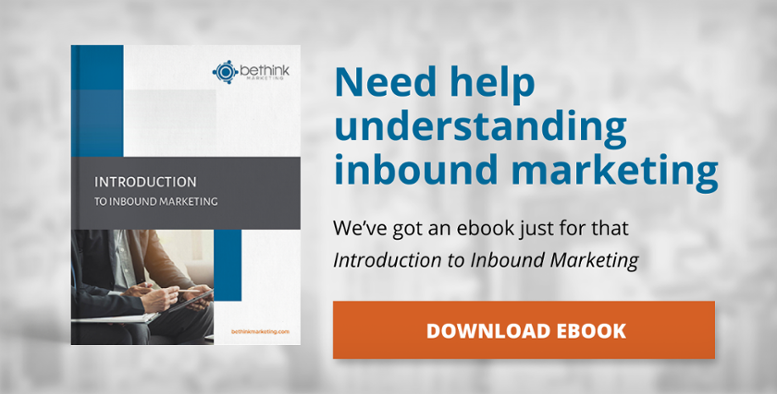
The truth is, people have changed how they shop. Not long ago, when they needed advice with specific solutions, they contact the business and speak with a salesperson in order to obtain all the information required to help them make a decision. Due to this, it's important to consider your client's journey.
Today, potential clients are doing their own research online where they end up reading articles, tip sheets, guides and eBooks before they speak with an advisor.
As you might be able to tell the difference between the two, there has been a shift of power from the salespeople to buyer due to the internet, which provides an infinite amount of content to help buyers make a decision.
Does that mean salespeople are less in need? Not at all. They are crucial in the sales process, but they are not involved at the same buying stage as they once were. Instead of being at the forefront, they need to be more in the middle to end of the sales process.
With that in mind, businesses need to adjust to this recent shift of power from seller to buyer. This is where the Buyer’s Journey comes into play.
What is the Client Journey?
The client journey or buyer journey is the process that customers go through when they are shopping for a product or solution. There are 3 stages to the buyer’s journey.

- Awareness: The buyer is aware that they have a problem but have not defined it yet. Through online research, the buyer is trying to identify their problem and make it more clearly tangible and defined.
- Consideration: The buyer has now defined their problem and starts researching the different options to help solve the problem. They begin researching specific solutions for that problem. Through such research, they are able to find different suppliers that could help.
- Decision: With all the research they have done, the buyer is left with several options and chooses the best out of them by evaluating each one.
Each of these stages need to be identified according to your developed buyer persona and business offerings. You need to identify what the problem or pain point is that your persona may be experiencing, what solutions are needed to help alleviate the pain point, and how your company has the right solution. The best way to figure this out is to create quotes that your persona would say for every stage.
Here are examples of quotes for every stage of the Client’s Journey for the buyer persona Mr. CEO Charlie
Awareness Stage: “How can I make sure that my wealth is well preserved and growing passively for my family? I thought about purchasing real estate properties but it’s too much work.”
Consideration Stage: “Alternative Real Estate investment for accredited investors sounds like a great concept. What are my options?”
Decision Stage: “There are 3 financial service companies that could help. I’ll review each one and decide the one that could help me best.”

The missing 2 stages of the Client’s Journey for the Financial Service Firms
Businesses tend to focus heavily on the Decision Stage. Most of their websites focus on who they are and how great their solutions are for investors. This leads them to provide content on their website for those who are already in the Decision Stage.
Their goal is to get visitors to pick up the phone and call them or get them to fill a “Contact Us” form on their contact page. However, such marketing initiatives will likely only appeal to those who are near the end of the Consideration Stage and in the Decision Stage who are ready to talk.
How about those who are still in the Awareness Stage or just starting out in the Consideration Stage? Remember, the sales power has shifted from the advisor to the investor. They want to do their own research before contacting a sales person. This is exactly why you need to provide content on your website that will cater to those who are at the beginning of the Buyer’s Journey.
Doing it right - Applying the Client Journey to Inbound Marketing
Inbound Marketing is all about providing the right content at the right time to attract visitors to your website, convert them into leads and close them as customers. To do this right, you need to have your Client Journey planned out.
To attract visitors, mainly those who are in the Awareness Stage, you need to write blog articles that resonate with their pain point.
When you have leads that are starting out in Consideration Stage, you need to provide long form content (such as comparison white papers, expert guides, and webinars) that help them explore their options.
As they are moving in the Decision Stage where you need to close them, you need to provide content that will convince them that your company is the best option. This may be more familiar to a lot of you as this stage focuses on the company’s success and products. Case studies, product literatures and vendor comparison sheets are some examples of the content that could be used.
Keeping each stage of the Client Journey in mind when planning content will ensure you’re meeting potential investors exactly where they’re at and help to build trust right from the beginning.


Let Us Know What You Thought about this Post.
Put your Comment Below.